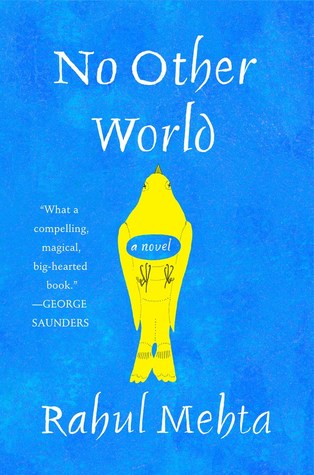A Review of Rahul Mehta’s No Other World (Harper, 2017).
By Stephen Hong Sohn
This novel was definitely one of the most anticipated releases of 2017; Rahul Mehta’s first publication, a collection called Quarantine, is one that I’ve taught a number of times in my classes. Mehta’s debut novel No Other World is an impressive work, one that spans cultures and continents, while also conveying the complicated lives of South Asian migrants.
Let’s have B&N provide a summary: “From the author of the prize-winning collection Quarantine, an insightful, compelling debut novel set in rural America and India in the 1980s and ’90s, part coming-of-age story about a gay Indian American boy, part family saga about an immigrant family’s struggles to find a sense of belonging, identity, and hope. In a rural community in Western New York, twelve-year-old Kiran Shah, the American-born son of Indian immigrants, longingly observes his prototypically American neighbors, the Bells. He attends school with Kelly Bell, but he’s powerfully drawn—in a way he does not yet understand—to her charismatic father, Chris. Kiran’s yearnings echo his parents’ bewilderment as they try to adjust to a new world. His father, Nishit Shah, a successful doctor, is haunted by thoughts of the brother he left behind. His mother, Shanti, struggles to accept a life with a man she did not choose—her marriage to Nishit was arranged—and her growing attachment to an American man. Kiran is close to his older sister, Preeti—until an unexpected threat and an unfathomable betrayal drive a wedge between them that will reverberate through their lives. As he leaves childhood behind, Kiran finds himself perpetually on the outside—as an Indian American torn between two cultures and as a gay man in a homophobic society. In the wake of an emotional breakdown, he travels to India, where he forms an intense bond with a teenage hijra, a member of India’s ancient transgender community. With her help, Kiran begins to pull together the pieces of his broken past. Sweeping and emotionally complex, No Other World is a haunting meditation on love, belonging, and forgiveness that explores the line between our responsibilities to our families and to ourselves, the difficult choices we make, and the painful cost of claiming our true selves.”
Mehta chooses a shifting third person point-of-view, primarily following the married couple, Nishit and Shanti, and their two children, Kiran and Preeti. The opening of the novel sees Kiran obsessively watching his neighbor’s house. As we discover, Kiran is desperately seeking a glimpse of the father living in that house, an All-American type upstate New Yorker named Chris Bell. Mehta patiently unfurls the complicated narrative, revealing that Kiran’s desire to see Chris Bell is wrapped up in the complicated dynamics of his mother’s never-quite-consummated love affair with Chris Bell as well as his own growing pains. The first third of the novel tracks this particular South Asian family as it adjusts as well as it can to small town dynamics.
The second shifts perspectives slightly to Kiran’s cousin Bharat, who comes to the United States due to a prophetic warning offered by a seer. This particular section tracks Bharat’s disenchantment with the United States, especially as he develops a severe allergic reaction that seems to mirror his feelings for this alien landscape. For his part, Kiran does little to help Bharat acclimate and instead becomes mired in his own dilemmas.
The third section of the novel shifts to India. It is at this point that readers discover Kiran is queer and that he is suffering from a serious depression. His parents’ unconditional love drives them to encourage Kiran to travel to India, where he can further explore his roots. Kiran’s parents believe that such a trip will allow him to gain greater perspective on his family and perhaps offer him a mental salve that will help enable him to battle his depression. Mehta’s novel is most successful in its ability to weave in so many disparate points-of-view. The kaleidoscopic perspectives generated provide a multifaceted rendering of the South Asian immigrant experience. Perhaps, most importantly, the novel serves to show us a queer Asian American character, who is able to navigate his struggles and achieve a sense of equanimity by the novel’s conclusion.
Buy the Book Here!
Review Author: Stephen Hong Sohn
Review Editor: Gnei Soraya Zarook
If you have any questions or want us to consider your book for review, please don’t hesitate to contact us via email!
Prof. Stephen Hong Sohn at ssohnucr@gmail.com
Gnei Soraya Zarook, PhD Student in English, at gzaro001@ucr.edu